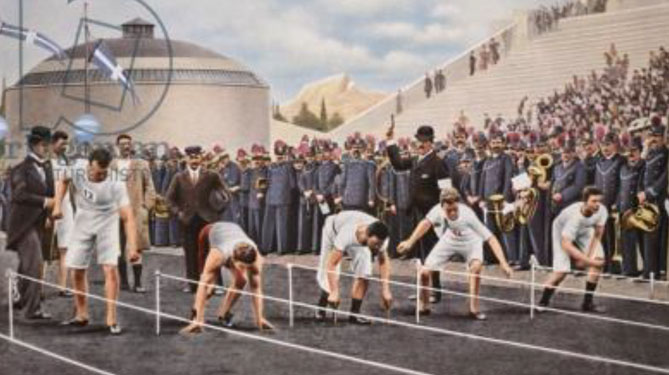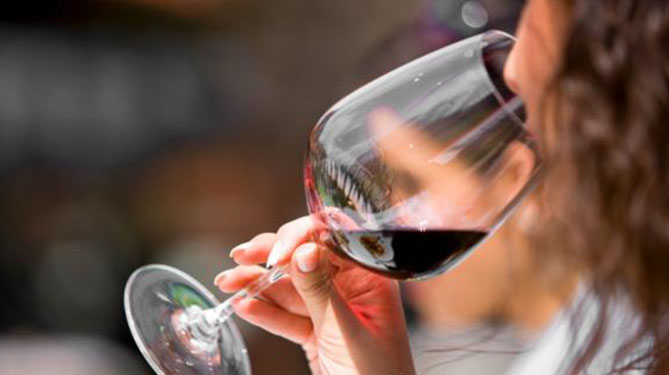“The Best Wine Judge”

“The best wine judge” – making some dog senses out of it.
It was an Olympic 100m race in an era long gone. In a black and white photo taken less than a split second after the gun went off, one particular athlete is already seen starting his second stride while others were just “taking off”.
In such a “nano” time gap, the athlete’s “ advanced” position is almost unbelievable unless he has false-started or has heard the gun much earlier than the rest. But there was no false start. After the race, he was hauled in for a series of laboratory tests. Indeed, it was found that he is 3 times more sensitive to sound than an average man.
This athlete is a so- called “gunner” runner i.e. a runner who hears the gun better than others. But with 99m still to go, a good “gunner” you may not necessarily be the champion unless you are also a good “runner” runner.
So is it all God-given that that you are a 100m sprint champion? i.e. Built with a sensitivity to sound in the top percentile of the population and the abundance of fast- twitch muscles needed for the burst of speed.
If this is true, then why bother to train to be the best sprinter? The fact is to be a sprint champion as with other sports, nature must be complimented by nurture. You can be “blessed’ but without training you will only be good but not the best.
In the often mythical world of wine tastings and appreciation, are there “gunners” out there? Can “gunners” in wines be scientifically determined as those in athletics?
By “gunner” athletes, we meant runners who are hypersensitive to sound.
By “gunner” tasters, we meant people who are hypersensitive to olfactory (smell) and gustatory (taste) stimuli due to high number of specific receptor cells in the respective organs.
Since all are sensory perceptions, if there are “gunner” sprinters, there should be “gunner” tasters.
Many great wine critics have wowed the world with their much talk- about ability in detecting the slightest of flaw, fault, oak, bouquet, aroma, etc.
But how many of them have been scientifically evaluated and proven that their sensory perception to major as well as minor components of wines is much superior than an average Joe?
Some have pointed out that certain programs such as the Certified Wine Educator (CWE) with blind tastings examination portion evaluate just this particular aspect of the candidate.
Another one is the Wine Judge Certification Program (WJCP) by the American Wine Society, a three year intensive course whose aim is to provide graduates the skills needed for objective evaluation of wines.
And of course, one must mention the Master of Wine (MW) program which has probably taken this type of evaluation to the highest level.
But you also read that a renowned wine critic not only confused wines from the right bank of Bordeaux with those from the left but also gave the highest rating to a fake Petrus. And the one who went “on and on” on the “quality” of a blend made by a convicted fraudster in his bedroom.
How many similar stories are there to be told? One does not want to believe that the world of fine wines is based on another’s snobbery and ego but on another’s empirical data which can be replicated anywhere in the world under the same set of conditions.
Some may argue that the best wine judges do make mistakes, it is just human. Well, a doctor may make a wrong diagnosis but that does not make assessments in medical school and hospital redundant or irrelevant.
We all know wines are subjected to extremely stringent tastings and evaluation in a prestigious wine competition such as The International Wine and Spirit (IWSC) competition in London.
What about the wine judges? Are they too subjected to stringent tests before they are qualified as judges for the competition? Look, whether you are a professor of Oenology, a regular contributor to wine columns in major newspapers, a famous wine critic or a MW is only relevant to an extent.
As we age, cells do not regenerate anymore, they simply died. These include cells in our olfactory and gustatory systems. So a MW who is 85 is not going to detect scent and taste as effectively as a MW who is 35. Of course there are contraries, but we are talking about the norm here.
Furthermore, a person could have an injury or infection that result in hypogeusia (partial loss of taste) or nasal polys that result in anosmia (loss of smell), however transient.
Should we subject all wine judges to a Certified Wine Judge examination prior to a major competition? Would such a test weed out judges whose olfactory and or gustatory faculties have deteriorated or “lost” or are “not there” in the first place?
In a wine competition, what we want is NOT a subjective evaluation of the wines but an objective one. So a judge’s like or dislike for “Brett” (short for Brettanomyces, a mousy odor caused by a type of yeast) found in the wine should not be a factor in deciding the overall quality of the wine itself.
What we want to know is whether the judge indeed smelled “Brett” or the toasty almonds, honeysuckles, ripped bananas, wild berries aroma as described by the winemaker.
You may ask,”Since you want to have such an objective evaluation, why not use a machine?”
Sure. There may be faster method of detection now but one can still make cell culture by swapping a few drops of a liquid on the right medium (such as the right type of agar), incubate it at the right temperature, then take a few colonies and subject them to a series of biochemical tests to find out whether a particular microorganism is present or not.
For volatile substances, put the sample through a GC-MS and you will have results in minutes.
These methods will help detect what you are looking for in a complex matrix , down to parts per trillion. They too have their threshold except it is not that of a human. Since wine is made ultimately for human enjoyment, the human threshold should be the only one of significance.
In a sound sensitivity test, how sensitive we are is indicated by the first physical reflex such as moving a leg or pressing a button after a sound stimulus. Neurophysiologists have concluded that it takes 80 to 100 milliseconds to react to one.
This is because it takes time for the brain waves (known also as evoked auditory response) to travel to the brain stem and then to auditory cortex. From there it then has to travel via the motor cortex to the central nervous systems and finally to the muscles. So a 100 milliseconds is set as the “ threshold” .
In other words, if you lift your leg off the starting block less than 100 milliseconds after the gun in a 100m sprint, you are deemed to have false-started according to IAAF rules.
So what is the detection threshold for different chemical stimuli in wines for a wine judge? No, we are not born equal, not in this aspect. Just like our sensitivity to sound, we are different.
Even among other species there are differences. We all know that dogs have a keen sense of smell. But not just any dog, it got to be the bloodhound. What makes them the best trailing dogs is their
300 million scent receptors. Compare that to a fox terrier which only got 147 millions. A homo sapien on the other hand has only 5 to 6 millions.
To track down a person, not only a dog’s nostrils have to pick up minute scent molecules, they also have to distinguish specific ones from the millions of air molecules which are “ background interferences”.
The same scenario is present in a wine competition. There are over 400 aroma compounds in wines, mainly volatile ones- working on its own or together to create a complex flavour to be swirled, sniffed , sipped, slurped by the judges. The temperature and air molecules in the room can at times interfere with what the judges are looking for.
On top of that, judges have to pay close attention to the major components in wine: acid(sourness), sugar(sweetness) and alcohol(the hot tactile sensation).
So what is the best judge’s threshold for these chemical stimuli? How good is he in distinguishing different stimuli? Is he free from his own subjectivism ?
You see, a dog will help you find the person you are looking for on a crowded street. Whether you kiss or kick the person he found is beyond his concerns. This is “non-subjectivity” to the limit!
A dog like the adorable Beagle with 220 million scent receptors will probably be a good wine judge. But if we cannot decipher the nebulous wine descriptors someone from our own species is saying, can we understand the “glossary” use by a dog?
The author, Benny Chia is a Certified Specialist of Wine & Spirits (CSW, CSS), Society of Wine Educators(USA). He also holds a M.Sc. in Biochemical Engineering from University College London, UK.
All views expressed here are solely those of the author in his private capacity.





